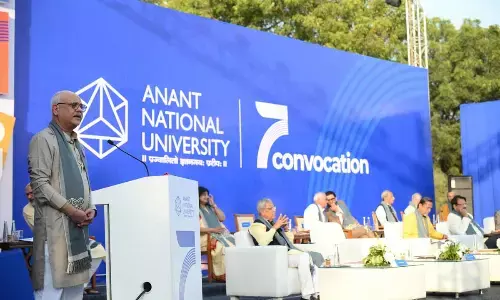Tulu Script Officially Added to Unicode Standard, Boosting Digital Communication for Tulu Speakers

Mangaluru: In a landmark development for the Tulu-speaking community, the Unicode Consortium has officially included the Tulu script in its latest update, Unicode 16. This update incorporates 80 characters, marking a breakthrough in preserving and promoting the Tulu language in the digital age.
The efforts to include the Tulu script in Unicode began in 2001, when a member of the Unicode Consortium, while working on the Kannada script, also championed the cause for Tulu’s inclusion. Despite initial setbacks, including miscommunication with the Tulu Academy in Mangaluru, the foundation was laid for future progress. Tulu scholar S. A. Krishnaiah, along with other experts, played a pivotal role in advancing the project.
“By 2014, the drive to create a Tulu Wikipedia had gained momentum, culminating in its launch on August 6, 2016. This further highlighted the need for Tulu Unicode. In 2017, the Tulu Academy set up a committee to finalise the script, seeking technical guidance along the way,” Krishnaiah told Hans India. Another proposal, focused on the Tilari script, was also submitted during this time.
Following extensive consultations, the Tulu script, under the name "Tulu-Tigalari," was added to the Unicode Standard. While there are minor discrepancies between the Tulu Academy’s initial proposal and the final Unicode version, the majority of characters were included. Tulu digits and specific diacritic marks required for Sanskrit writing were also incorporated.
Krishnaiah emphasised the far-reaching benefits of this achievement, noting, “This development paves the way for the creation of Unicode-encoded fonts, keyboard software for Tulu Unicode, and tools to convert existing Kannada script data into the new Tulu format.”
Key Impacts of Unicode Integration for Tulu
Enhanced Digital Communication: Tulu speakers can now use their native script across digital platforms, including social media, websites, and messaging apps, strengthening their online presence.
Cultural Preservation: The digitisation of the Tulu script will help preserve the language and its cultural heritage, ensuring accessibility for future generations.
Educational Resources: The availability of Tulu in Unicode will facilitate the development of educational materials, such as textbooks and online courses, fostering language learning and literacy.
Technical Innovation: Unicode-encoded fonts, keyboard software, and translation tools will simplify the use of Tulu in digital communication.
Global Recognition: Inclusion in the Unicode Standard grants Tulu worldwide recognition, encouraging more developers to support the script across software and applications.
This milestone is expected to empower the estimated 1.8 million Tulu speakers worldwide, enhancing their ability to communicate effectively in their native language. While the majority of Tulu speakers are concentrated in the coastal regions of Karnataka and Kerala, there is a significant diaspora in the Gulf countries and the United States.
Tulu, a Dravidian language closely related to Kannada, has a rich oral tradition but relatively few written records. Its script, which originated from the Grantha script, bears similarities to Malayalam. Despite this digital breakthrough, the battle to include Tulu in the Eighth Schedule of the Indian Constitution continues. Institutions such as the Dravidian University in Andhra Pradesh, which has a dedicated Tulu chair, continue to support these efforts.











